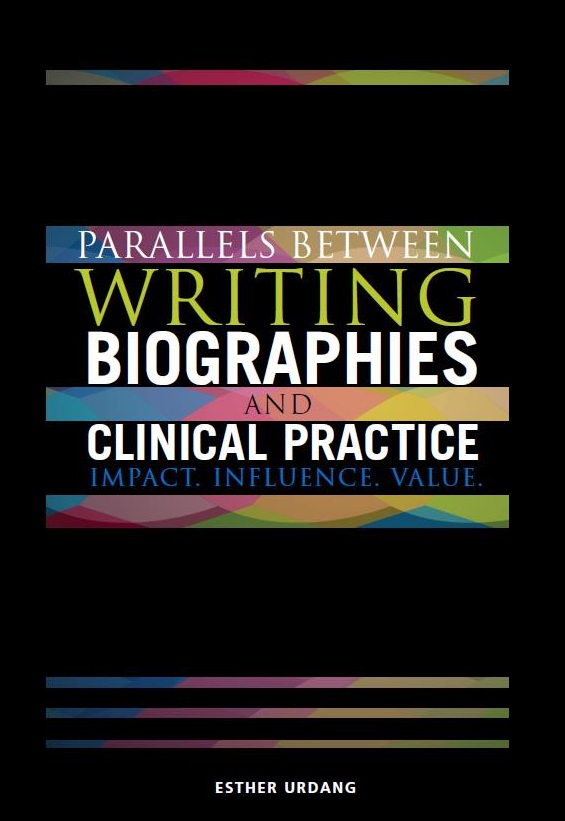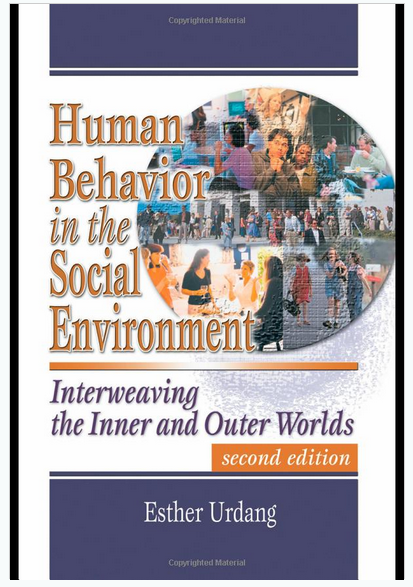Books |
|
 |
|
 |
Human Behavior in the
Social Environment: Interweaving the Inner and Outer Worlds,
2nd Edition
A new, updated edition of the classic text on the internal and external factors influencing human behavior. This new and updated edition of the vital human behavior textbook for social work students emphasizes the biopsychosocial framework with a psychodynamic and developmental perspective. While especially designed to benefit and enlighten graduate social work students it is also a valuable resource for undergraduate social work students as well as beginning and advanced readers in human services such as nursing, medicine, public health, clinical psychology, counseling, who will find this both a helpful review and source of new knowledge. The book approaches development through the life cycle, discussing the developmental challenges, tasks, and problems of each stage. Presenting complex concepts in a clear and understandable way, it also examines and integrates systems and organizational factors, as well as the impact of culture on clients and treatment programs. Current social issues such as our aging population, violence, and abuse, as well as updated information on contemporary thinking and the application of postmodern theory are included. Written from the perspective of a classroom teacher, faculty advisor, and clinician, Human Behavior in the Social Environment emphasizes practice dilemmas of concern to practitioners and student-practitioners. Case vignettes, as well as material from literary works, biographies, and newspapers bring theories to life. With its chapter-by-chapter learning exercises, and additional readings, this copiously-referenced volume illustrates the complexities of human existence, the multiple social conflicts operating in society, and the relevance of social policy dilemmas. A helpful instructor's manual accompanies this text, and is available as a free download from Routledge Press. Human Behavior in the Social Environment looks at:
|
Book ReviewsHuman Behavior in the Social Environment, 2nd Edition |
|
|
Nancy Boyd Webb, DSW, Distinguished Professor of Social Work Fordham
University
|
“Social work students who have the good fortune to have this book as a text for their Human Behavior and the Social Environment class will actually enjoy this very readable overview of numerous theories and their application in case examples. Grounded in a bio-psychosocial perspective, this INCREDIBLY COMPREHENSIVE book emphasizes the psychodynamic understanding of human behavior through examples from novels, biographies and autobiographies in addition to newspaper and magazine articles. . . . BREATHES LIFE INTO THE THEORIES AND MANAGES TO CONVEY THE VAST COMPLEXITY OF LIFE FROM BIRTH TO ADULTHOOD. Learning exercises at the end of each chapter help the student integrate the concepts into a social work practice framework. . . . A VALUABLE CONTRIBUTION TO SOCIAL WORK EDUCATION.” |
|
Roger R. Miller, DSW, Professor Emeritus Smith College School for Social Work |
“True to its title, this work offers A RICH, INCLUSIVE, UP TO DATE REVIEW of the many formulations that help to reveal the person in the environment. More importantly, it identifies converging understandings that bridge separate lines of that work. It thus offers an image of the increasingly comprehensive understandings that are within our grasp and invites our participation in that exciting enterprise.” |
|
Eric Kingson, PhD, Professor of Social Work Syracuse University |
“ENGAGING AND LUCID... Presents a balanced view of human behavior theories, successfully shedding light on the age-specific needs, abilities and challenges of individuals over the course of their lives. Drawing on a biopsychosocial perspective, Urdang successfully integrates psychodynamic theory with other theoretical perspectives. . . . SHOULD BE WIDELY USED IN SOCIAL WORK AND RELATED HEALTH AND HUMAN SERVICES CURRICULA.” |
First Edition Reviews |
|
|
Michael Hayes, PhD
|
Clinical Social Work Journal, HUMAN BEHAVIOR IN THE SOCIAL ENVIRONMENT: INTERWEAVING THE INNER AND OUTER WORLDS. Urdang, Esther. New York: Haworth, 2002, 642 pp.
03, Vol. 31, No. 4, pp. 437-440 |
| Robert J. MacFadden, Ph.D., RSW | Smith
College Studies in Social Work,
Human Behavior in
the Social Environment: Interweaving the Inner and Outer Worlds By
Esther Urdang, Ph.D. 2004, 74 (4), pp. 689-691 |
Links |
|
| If you are interested in seeing additional information about or in buying a copy of Esther's book, Human Behavior in the Social Environment: Interweaving the Inner and Outer Worlds, Second Edition. | Human Behavior |
| For more information on Routledge, the publisher of the book, | Routledge |
Journal Articles |
|
| Awareness of Self - A Critical Tool | Social Work Education: The International Journal, Vol.
29(5), August 2010, pp.523-538.
Free access to PDF |
| (1999) The Video Lab: Mirroring Reflections of Self and the Other | The Clinical Supervisor, 18:2, 143-164. Abstract and/or first page preview are here. |
| (1999) The Influence of Managed Care on the MSW Social Work Student's Development of the Professional Self. | Smith College Studies in Social Work, 70:1, 3-25. Abstract and/or first page preview are here. |
| (1999) Becoming a Field Instructor: A Key Experience in Professional Development. | The Clinical Supervisor, 18: 85-103. Abstract and/or first page preview are here. |
| Ceconi, B. and Urdang, E. (1994) Sight or Insight?
Child Therapy With a Blind Clinician. |
Clinical Social Work Journal, 22: 179-192. Abstract and/or first page preview are here. |
| (1991) The Discipline of Faculty Advising. | Journal of Teaching in Social Work, 5: 117-137. Abstract and/or first page preview are here. |
| (l979) In Defense of Process Recording. | Smith College Studies in Social Work, 50: 1-15. Abstract and/or first page preview are here. |
| (1966) An Experiment in Teaching Social Work Tasks. | Social Casework, 47: 451-455. Abstract and/or first page preview are here. |
| (1964) An Educational Project for First-Year Students in a Field Placement | Social Casework, 45: 10-15. Reprinted in: Trends in Field Work Instruction. 1966. Family Service Association of America. |
Biographical Information |
|
| Education | I received my B.A. from Antioch College, a master's degree in social work from Adelphi University, and a Ph.D. in social work from Simmons College School of Social Work. |
| Teaching |
On
the faculty of Boston College Graduate School of Social Work for 27
years,
I taught human behavior in the social environment, the required
clinical practice courses, and psychopathology. I was Assistant
Director of Field Education, faculty advisor to many students, and
developed and taught the seminar for field instructors. I was a Research Advisor as Adjunct Associate Professor for Smith College Graduate School for Social Work for 10 years. In the Spring of 2007, I was Visiting Assistant Professor of Psychology, Wheaton College. |
| Licensing | I am a licensed independent clinical social worker with over 35 years of experience and hold a Diplomate in Social work from NASW. My practice has been in a variety of settings, including mental health clinics, family agencies, and hospitals. |
| Writing | Currently, I am
writing the 3rd edition of Human Behavior in the Social
Environment: Interweaving the Inner and Outer Worlds, for Routledge.
Member of North American Advisory Board of Social Work Education: The
International Journal from 2011 to 2013 |
| Practice Experience | Practiced and supervised for many years in mental health and family agencies, hospitals, and private practice. |